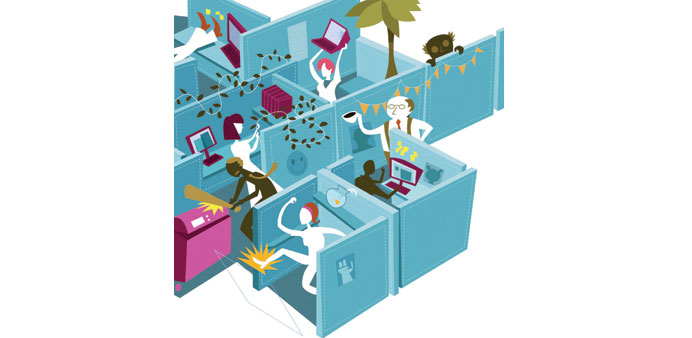By Judi Light Hopson, Emma H Hopson and Ted Hagen/Tribune News Service
Do your employees or co-workers seem bogged down and unmotivated? Are they taking longer to finish routine projects, or do they make too many excuses about why they can’t keep up with the workload?
If so, these individuals may be wrestling with burnout. In today’s complex society, we all deal with dozens of issues in our personal lives before we get to work. This overload of problems and pressures pushes even the strongest person to the limit.
We can have job burnout, or we can have “life” burnout. Think of this as burning the tyres off a car, while spinning the wheels faster and faster - but making little progress in moving forward.
Doing too much, giving too much means using up one’s personal emotional reserves. Burnout occurs when we expend a lot of energy, but we don’t see any real rewards coming back to us. After a time, it takes more and more energy to accomplish even basic tasks.
Tired burned-out employees will cost any employer in the long run. If employees begin to fade in creativity and drive, this will start to erode any company’s bottom line.
These strategies can help you empower your workplace associates to curb or reduce burnout:
l Do some nice things for your employees, even on a small budget. Making individuals feel appreciated will feed their morale. Providing coffee, snacks and magazines in a break room can help.
l Help employees get organised. Hire a seminar speaker to teach your employees ways to save time and energy. Or better yet, hire a professional coach to help individuals organise their phone calls, priorities, paperwork and to-do lists.
l Offer rewards for good ideas on problem solving. Ask employees to write out detailed plans for improving methods in your workplace. Try to incorporate those good ideas and thank the employee via gift cards or having a photo in the company newsletter.
l Encourage each person to have a self-care plan. This might be a healthy eating programme, 30 minutes of exercise each day, or going to the movies on Friday nights with a small group of friends. Happy employees want to do a good job when the working-day morning arrives after the weekend break, so remind them to practise taking care of their emotional well-being and physical wellness.
A young executive we’ll call Jill says she’s learned to spot burnout in employees. “I try to head it off, before an employee is facing exhaustion,” she says.
Jill goes on to explain that a young grandmother in her firm, who just turned 52, suddenly had to adopt her two step-grandchildren when their mother died.
“I met with this lady for 30 minutes to tell her, ‘I know you’ve got a lot on your plate,’” Jill told us. “I helped her line up an after-school babysitter for the grandkids, and I told her I would not schedule her for any travel for a while.”
Like any wise executive, Jill knew that helping her employee would have payoffs for the company - plus keep the employee feeling more supported and empowered.
Jill told us she also asked her employee to bring the two grandchildren to meet her. “I had her bring the kids to my office, so I could tell them what a great employee their grandmother is. I told them I knew their pain, because my own mother died when I was 10,” says Jill.
The only way to change a stressful situation for the better is to aim for positive outcomes. Helping employees feel valued is a win/win from every standpoint.
♦ Judi Light Hopson is the executive director of the stress management website USA Wellness Cafe at www.usawellnesscafe.com Emma Hopson is an author and a nurse educator. Ted Hagen is a family psychologist.



